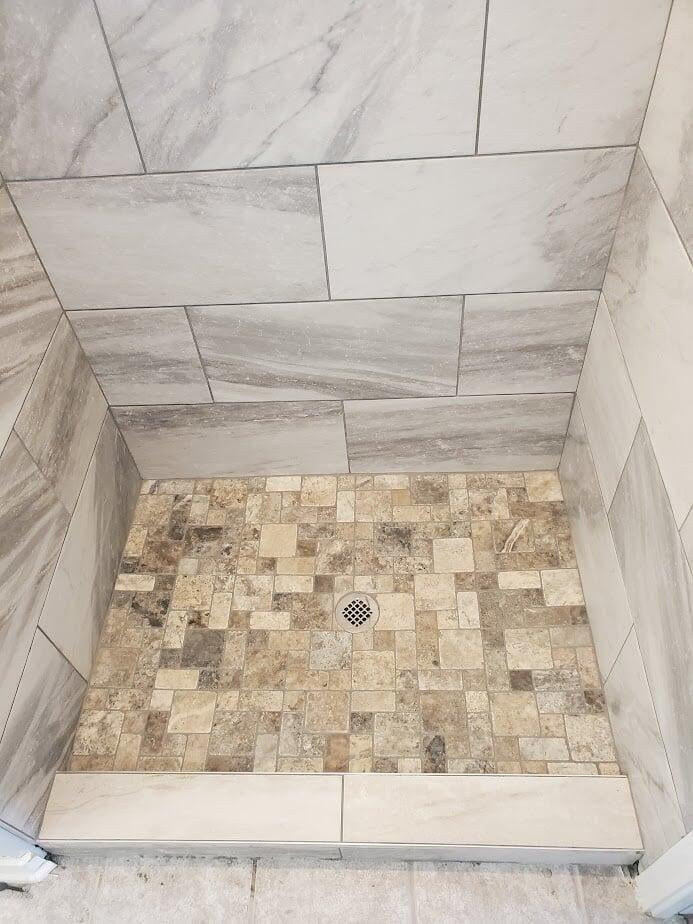
A shower drain is a vital plumbing fixture at the base of your shower, responsible for removing wastewater and preventing water accumulation on your bathroom floor. Shower drain installation is crucial in ensuring effective water drainage and preventing moisture-related damage.
When remodeling your bathroom, don’t overlook this key component, as the right shower drain ensures optimal water flow and prevents water damage while enhancing your bathroom’s style. By selecting a high-quality shower drain, you contribute to a seamless design and a hassle-free shower experience, avoiding standing water and mold growth, and boosting the overall aesthetic and longevity of your bathroom.
How Does a Shower Drain Work?
How Does a Shower Drain Work?
At its core, a shower drain serves to funnel wastewater from the shower floor into your home's plumbing system. Installed at a sloped point on the shower floor, the drain collects water and ensures it flows efficiently into the drainage pipes. A proper slope is critical to ensure water doesn't stagnate, as this can lead to leaks or mildew growth over time.
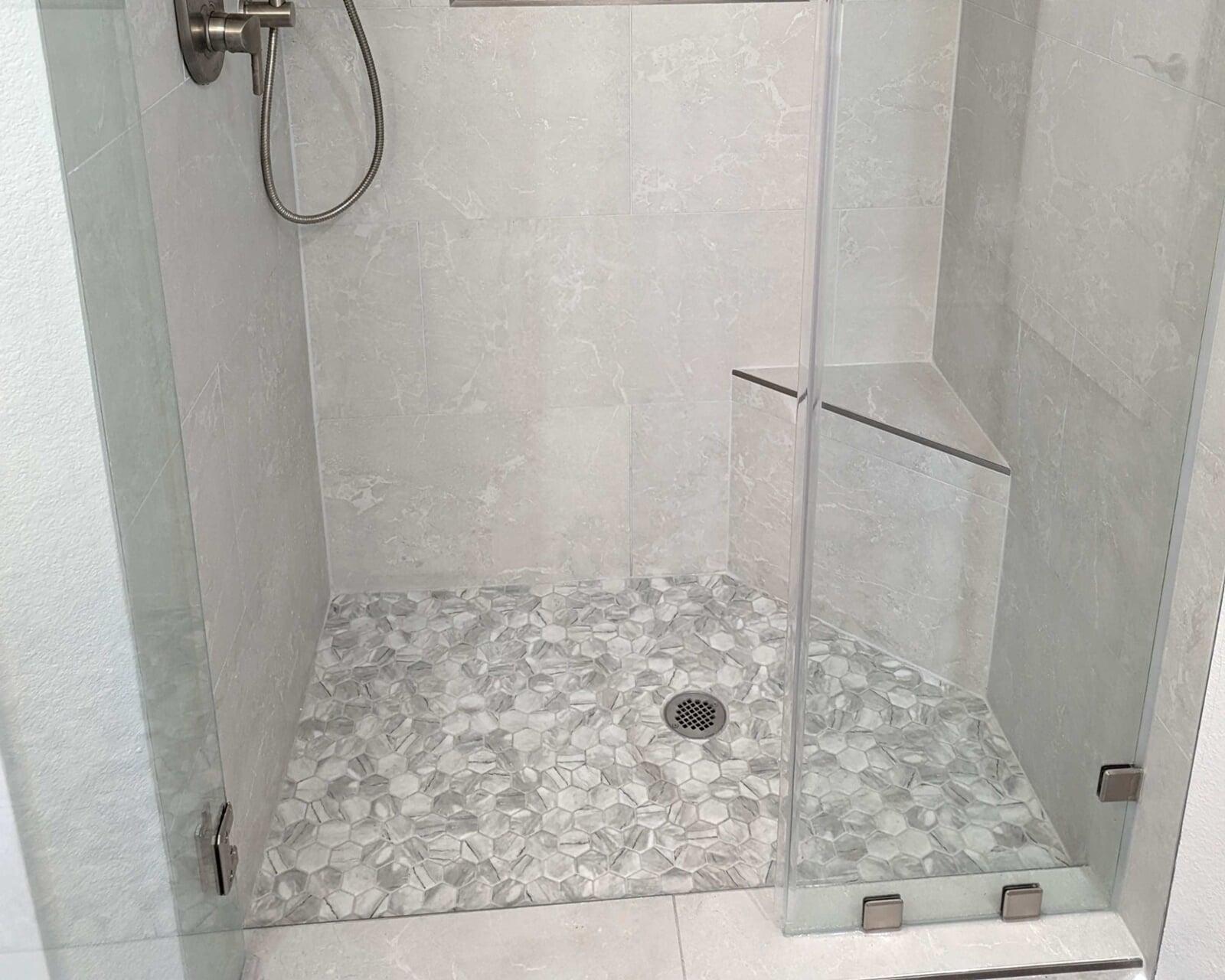
Types of Shower Drains
Types of Shower Drains
When it comes to shower drains, several designs are available, each catering to different preferences, budgets, and practical needs. Here’s a detailed look at the most common types:
1. Point Drains
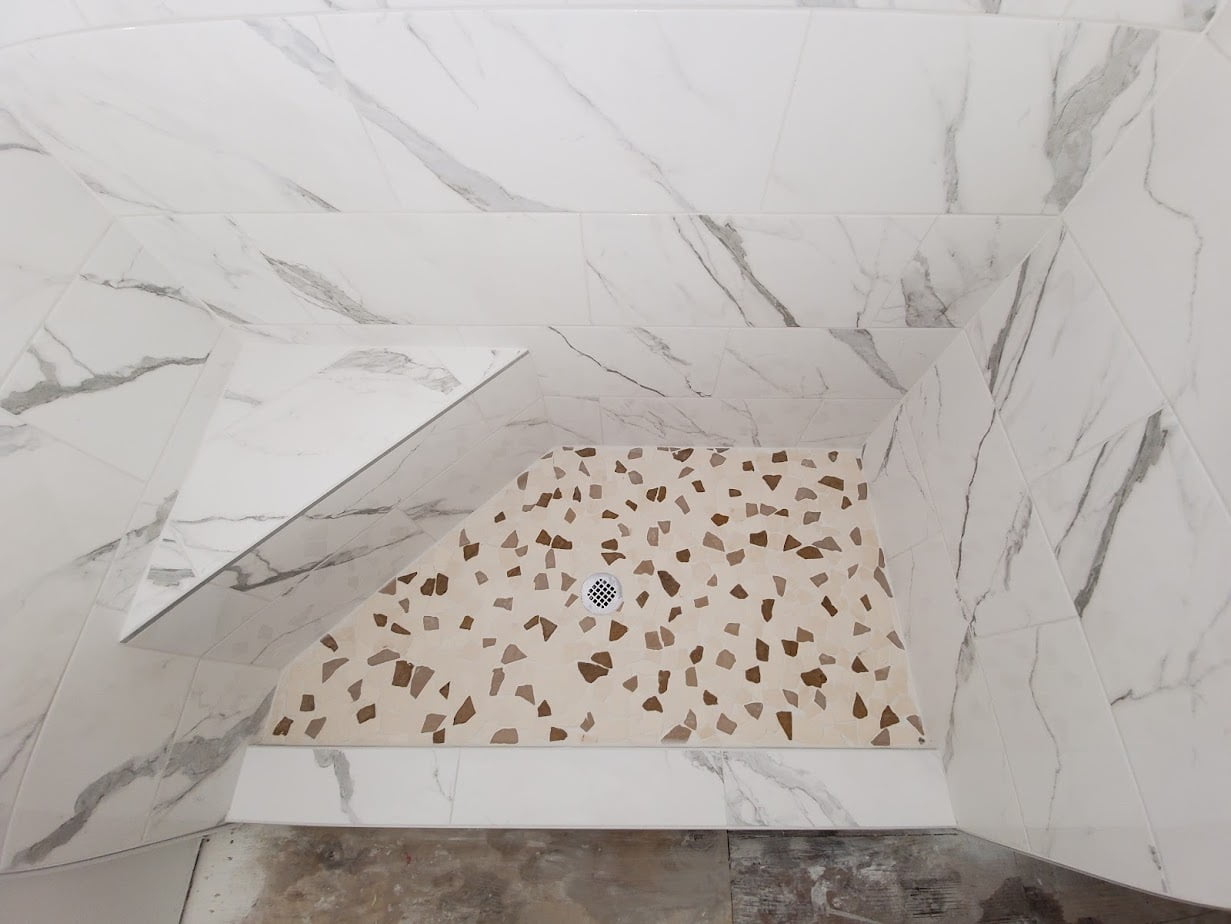
Point drains, often referred to as standard or traditional drains, are the most commonly used shower drains. These drains are typically located at the center of the shower floor, though they can also be installed in corners.
Key Features of Point Drains
Key Features of Point Drains
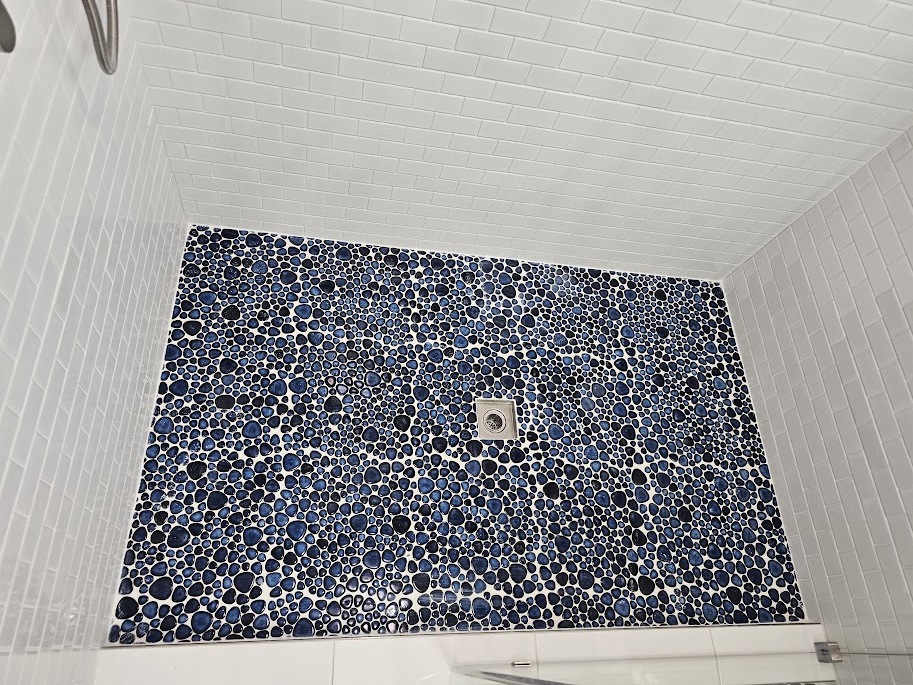
- Shape and Style: Point drains are often square or circular and covered by a metal grate.
- Placement: Usually positioned in the center or corner of the shower floor.
- Tile Compatibility: Works best with smaller tiles, such as 4”x4” or mosaic tiles, to allow proper water flow toward the drain.
Advantages of Point Drains
Advantages of Point Drains
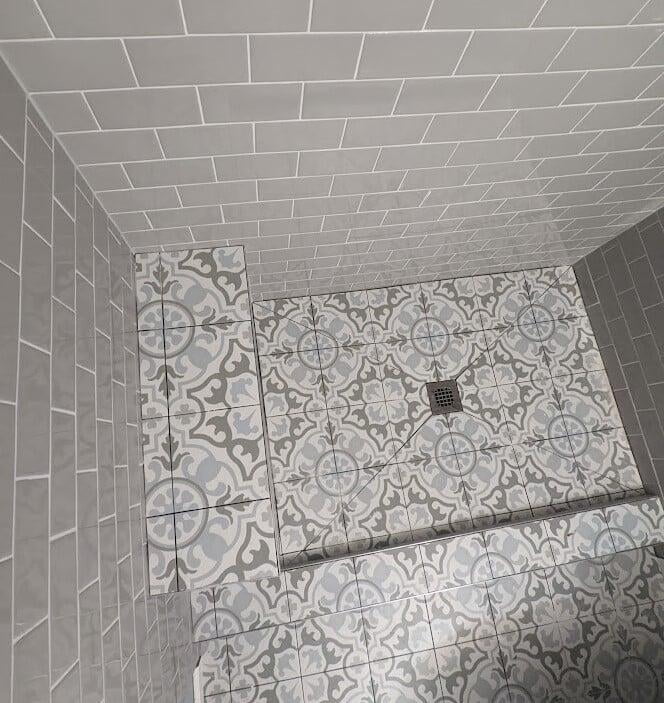
- Cost-Effective: Point drains are one of the most affordable options on the market, making them a popular choice for budget-conscious homeowners.
- Ease of Installation: Installing a point drain is straightforward and requires minimal adjustment to standard shower floors.
- Widespread Availability: As the most common type of drain, point drains are easy to find in a variety of styles and finishes.
Disadvantages of Point Drains
Disadvantages of Point Drains
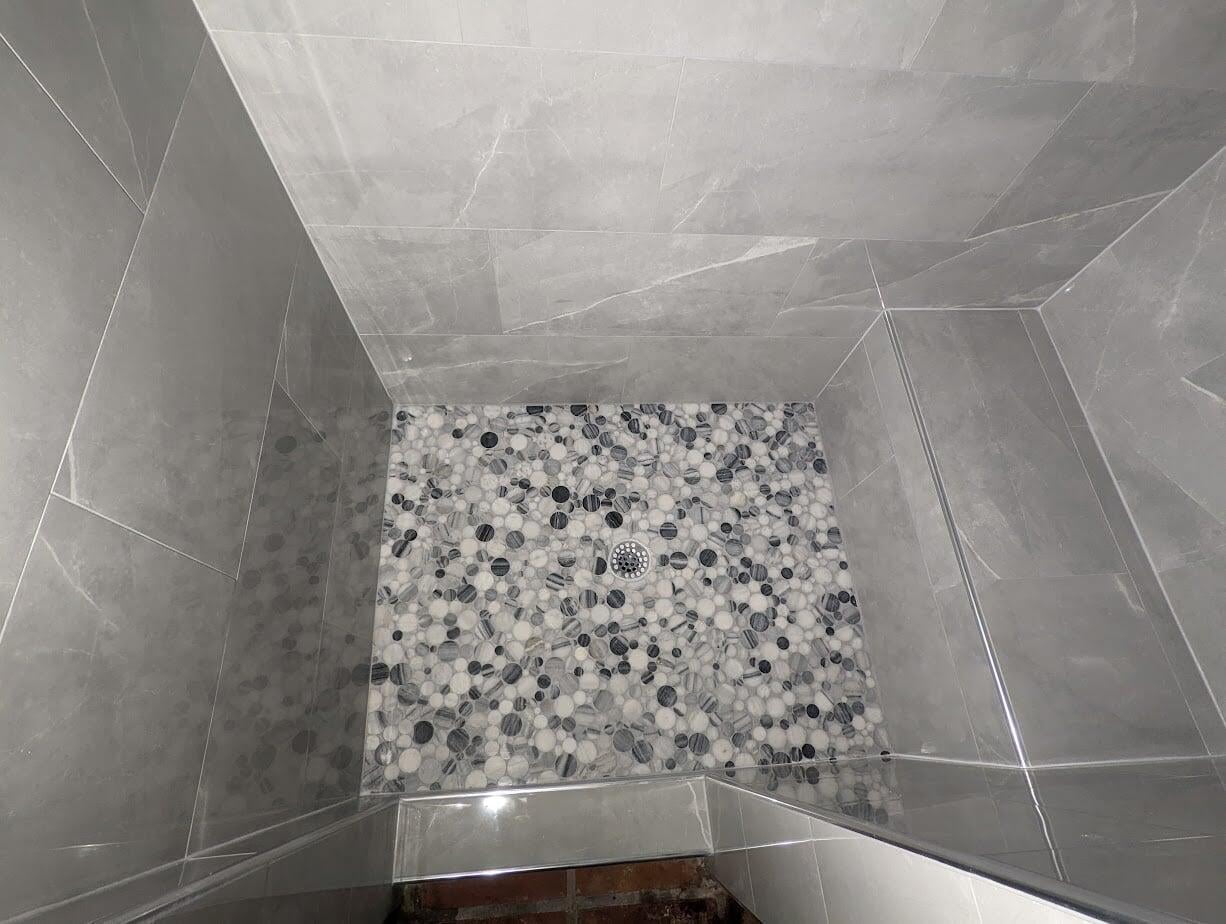
- Limited Compatibility with Large Tiles: Point drains may not work effectively with large-format tiles (e.g., 6”x6” or larger), as these require precise cuts and slopes to ensure water flows properly.
- Higher Risk of Pooling: Poor installation or improper sloping may result in water accumulation.
2. Linear Drains
2. Linear Drains
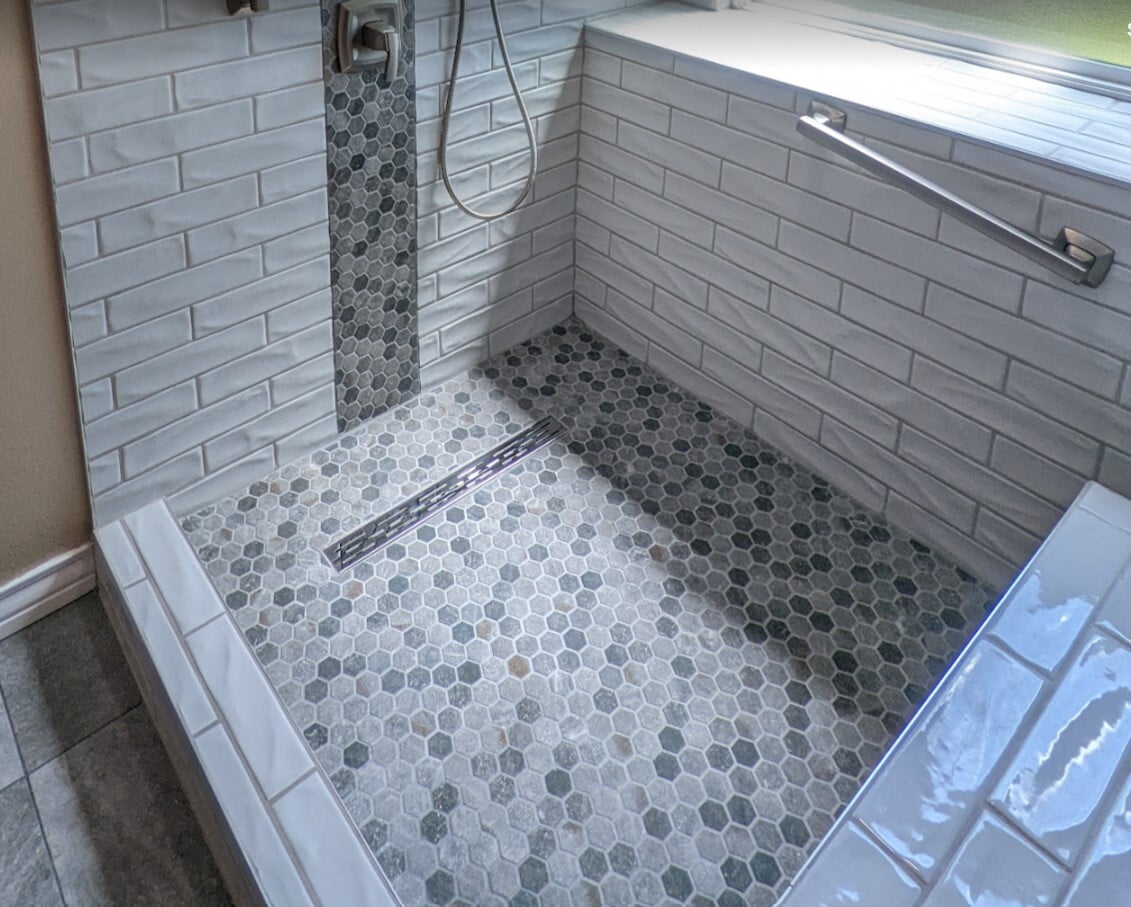
Linear shower drains offer a sleek and modern design that enhances the aesthetic appeal of your bathroom. These drains are not only visually appealing but also highly functional, providing efficient water drainage across their elongated surface.
With their ability to handle water flow from multiple showerheads, linear drains prevent pooling and ensure a hassle-free shower experience. Overall, linear shower drains are a perfect choice for those seeking a combination of style, functionality, and efficiency in their bathroom design.
Key Features of Linear Drains
Key Features of Linear Drains
- Shape and Style: Long, rectangular drains covered by grates that can be customized to match your bathroom decor.
- Placement: Linear shower drains are commonly installed along one edge of the shower or across its length.
- Tile Compatibility: Ideal for both large-format tiles and smaller tiles, providing greater design flexibility.
Advantages of Linear Drains
Advantages of Linear Drains
- Modern Aesthetic: Linear drains provide a sleek, sophisticated look that complements minimalist and contemporary designs.
- Efficient Water Flow: Their elongated design can handle high water flow rates, making them ideal for showers with multiple water sources or rainfall showerheads.
- Simplified Floor Slope: Unlike point drains, which require sloping from all sides, linear drains only need the floor to slope in one direction. This simplifies installation and ensures efficient drainage.
Pro Tip: Linear drains are perfect for modern bathrooms where aesthetics and functionality meet. They work especially well in showers with high water output.
Pro Tip: Linear drains are perfect for modern bathrooms where aesthetics and functionality meet. They work especially well in showers with high water output.
3. Tile-In Drains
3. Tile-In Drains
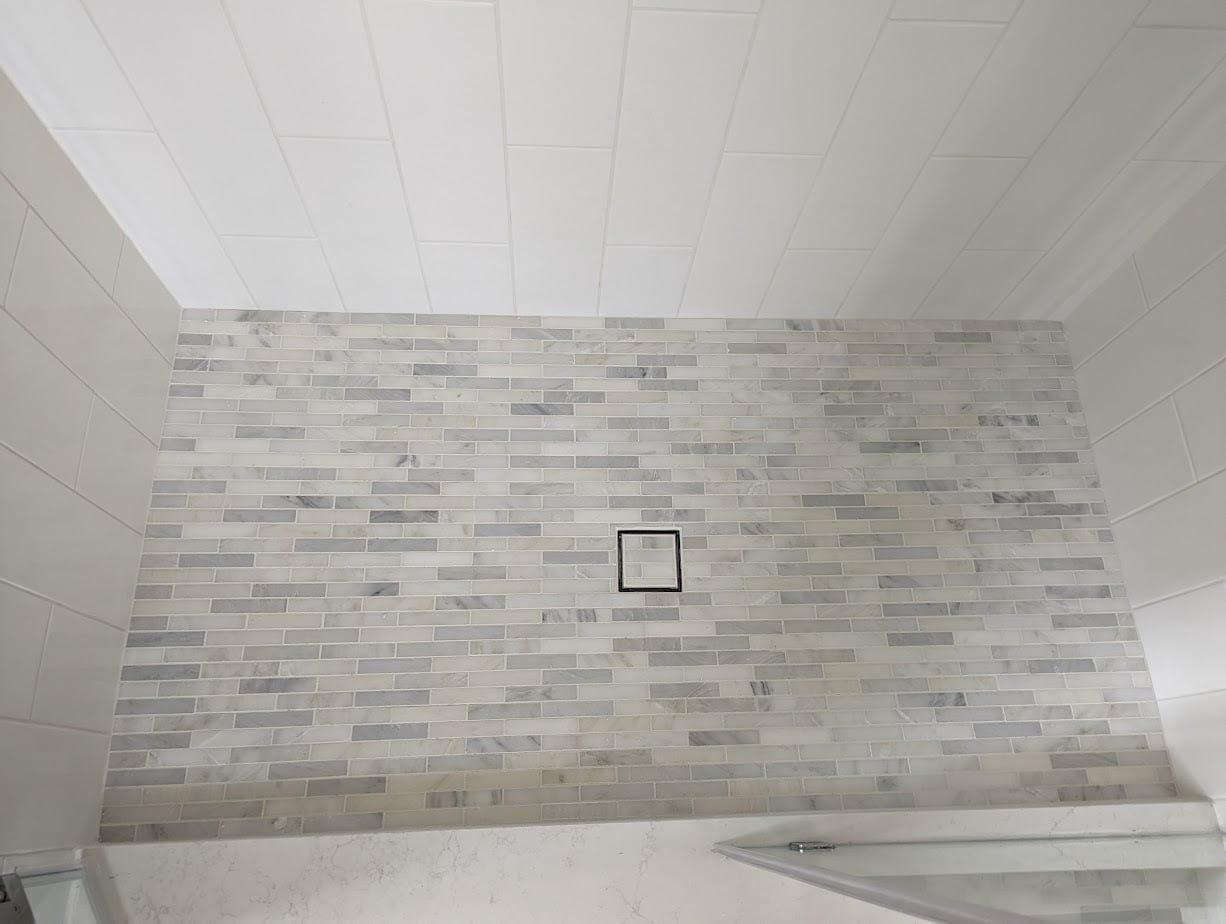
Tile-in drains are a subset of linear drains but are designed to seamlessly blend into your shower floor by integrating the same tile material.
How Tile-In-Drain Systems Function
How Tile-In-Drain Systems Function
Tile-in-drain systems utilize a three-piece design and the same tile as the shower floor, resulting in an almost invisible appearance. These systems are specifically designed to capture water that passes through grout lines or flows over the tile surface. By directing water away from the tile and towards an invisible drain, they prevent water accumulation and ensure efficient drainage.
Key Features of Tile-In Drains
Key Features of Tile-In Drains
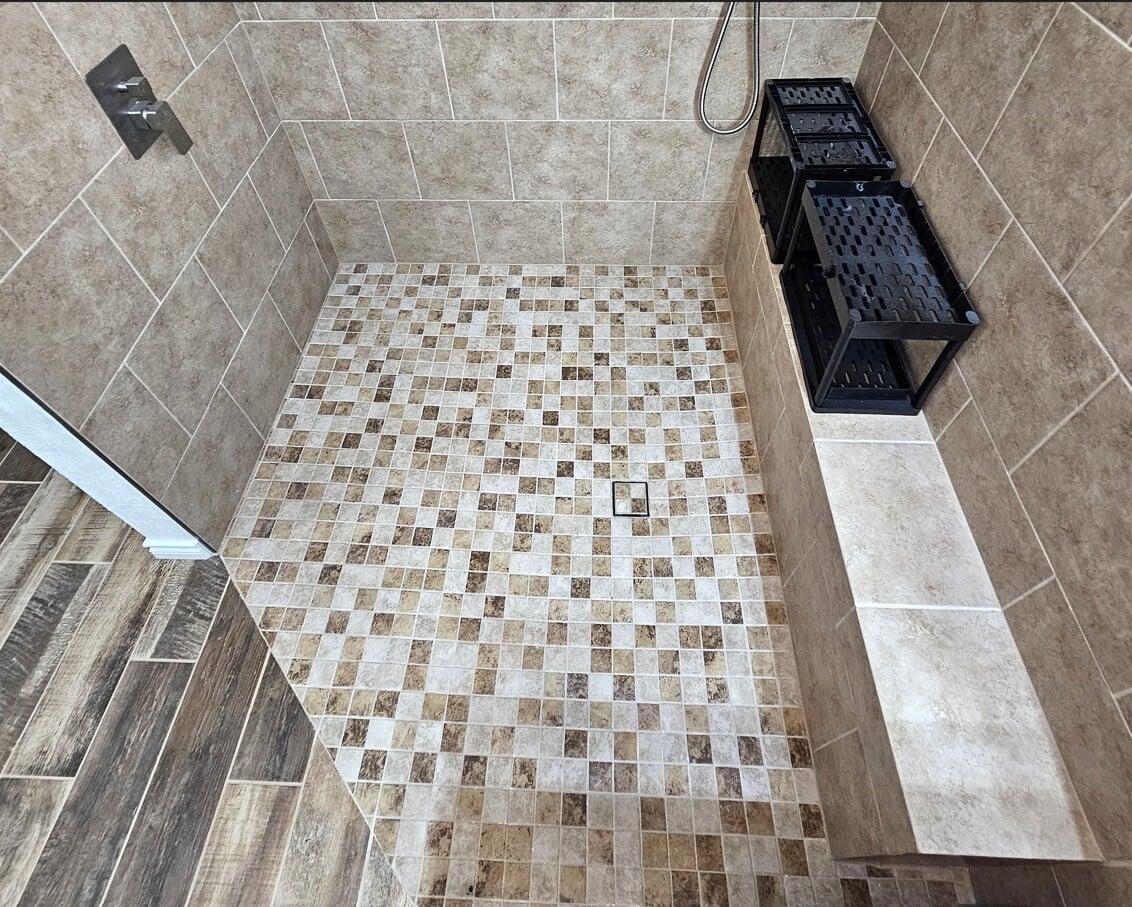
Design: The drain is hidden beneath a recessed frame that holds a tile insert matching the shower floor.
Placement: Can be installed at the center of the shower or along its edges.
Advantages of Tile-In Drains
Advantages of Tile-In Drains
Invisible Design: Provides a unified, seamless look by making the drain virtually disappear.
Flexible Placement: Suitable for various shower designs and tile sizes.
Disadvantages of Tile-In Drains
Disadvantages of Tile-In Drains
Higher Cost: The design and customization make this one of the more expensive drainage options.
Challenging Installation: Requires precise cutting and placement to ensure proper drainage and alignment with the floor.
4. Perimeter Drains
4. Perimeter Drains
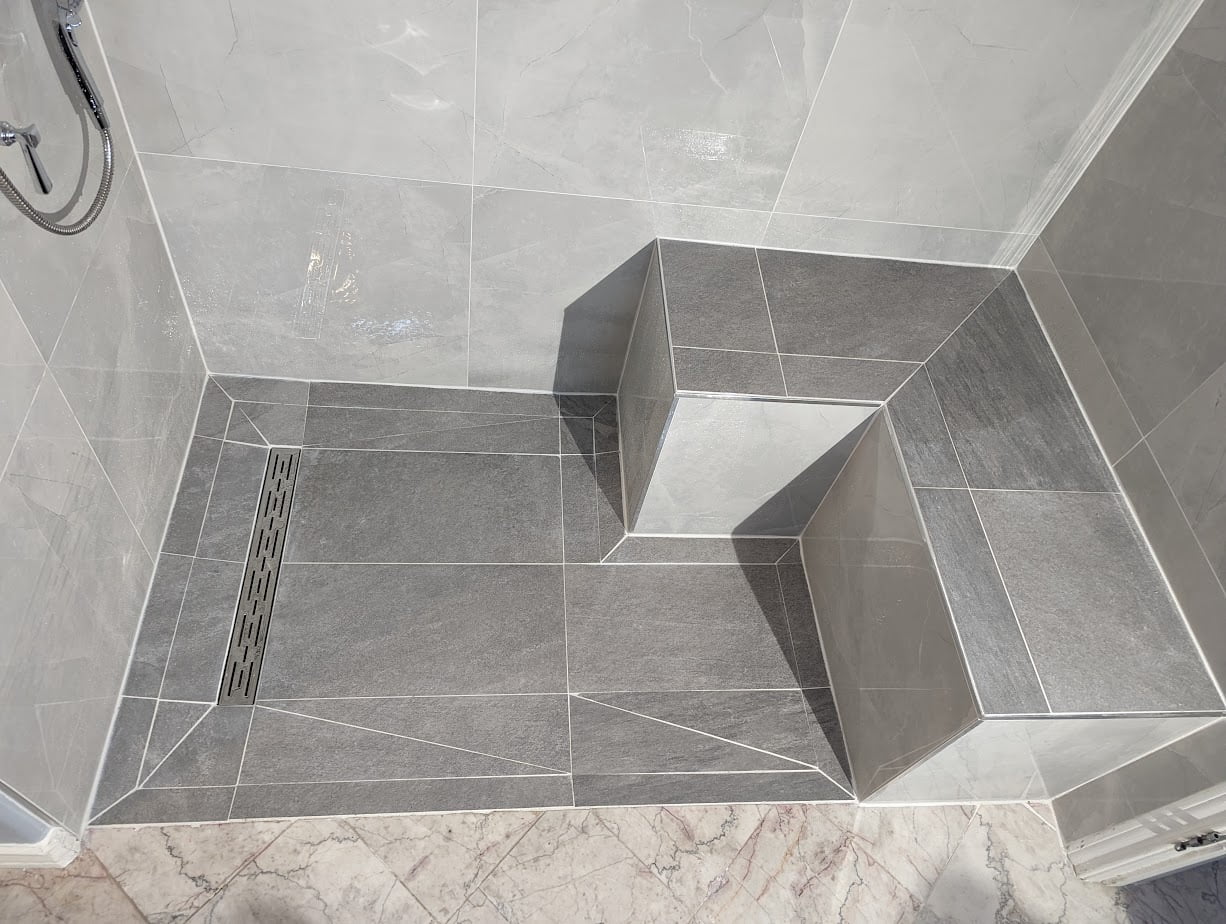
Perimeter drains, also known as channel drains or trench drains, are a specific type of linear shower drain designed to be installed along the edges of the shower floor.
These drains offer an innovative solution for efficient water removal, as they capture water seeping beneath the tiles and direct it towards the drainage system. They are particularly suitable for showers with a modern aesthetic, seamlessly blending into various bathroom styles.
Key Features of Perimeter Drains
Key Features of Perimeter Drains
Shape and Style: Narrow channels that encircle the perimeter of the shower floor.
Placement: Installed along the edges of the shower, usually hidden under tiles or a cover plate.
Advantages of Perimeter Drains
Advantages of Perimeter Drains
Comprehensive Water Capture: Unlike linear drains, which collect water from a single side, perimeter drains efficiently gather water from all sides of the shower floor, making them ideal for walk-in showers.
Versatility in Design: They work exceptionally well in showers with open layouts or curbless designs.
Discreet Design: Perimeter drains are often less noticeable than linear drains, as they can be completely hidden under tiles or decorative grates.
Disadvantages of Perimeter Drains
Disadvantages of Perimeter Drains
Complex Floor Slope: Installing a perimeter drain requires the entire shower floor to be sloped toward the edges, which can complicate installation and tile layout.
Higher Cost and Installation Effort: The continuous design and intricate slope requirements make perimeter drains more expensive and challenging to install.
Key Difference from Linear Drains: While both provide a modern aesthetic, linear drains are a single, straight channel installed on one side of the shower, whereas perimeter drains encompass the entire shower floor edge for more comprehensive water collection.
Key Difference from Linear Drains: While both provide a modern aesthetic, linear drains are a single, straight channel installed on one side of the shower, whereas perimeter drains encompass the entire shower floor edge for more comprehensive water collection.
4. Hidden Drains
4. Hidden Drains
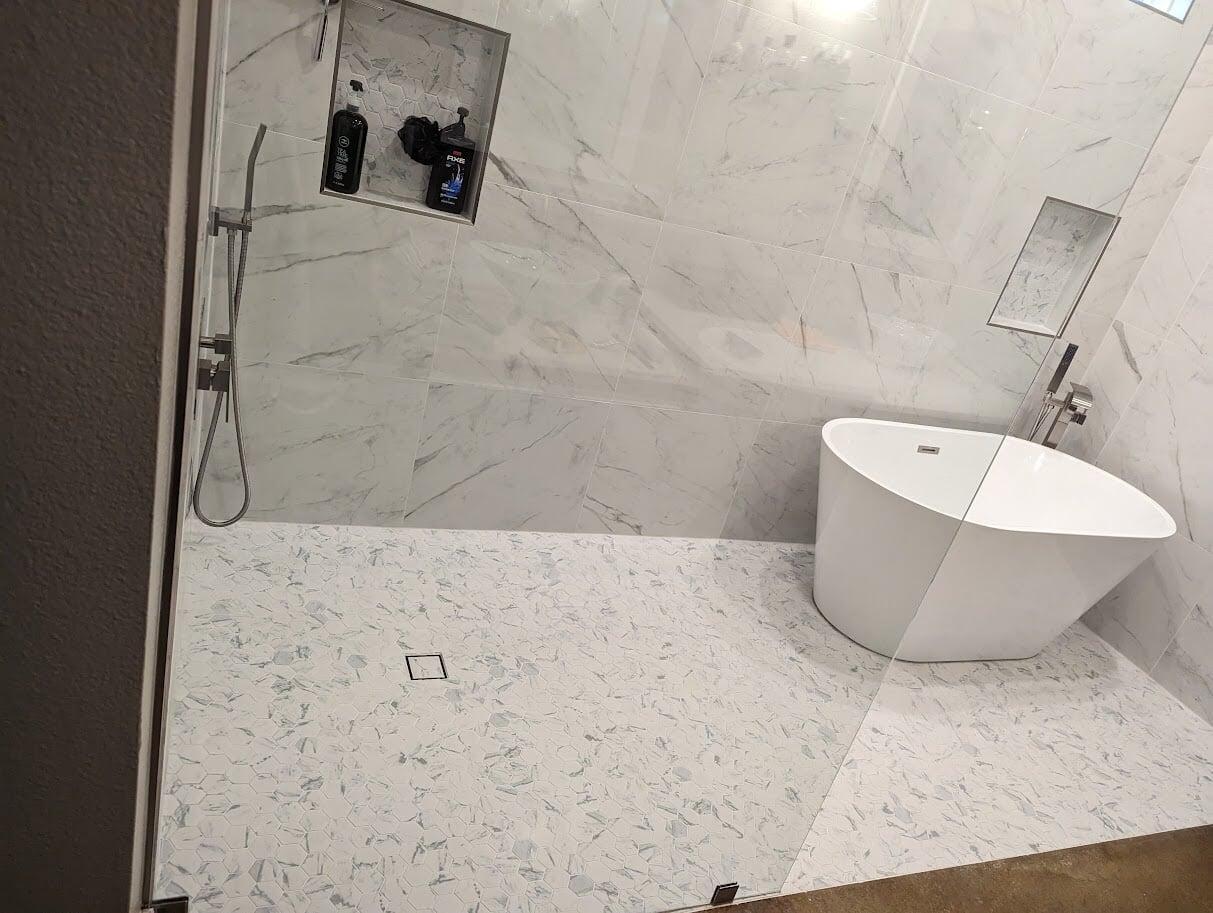
Hidden drains are a broader category that includes any drain designed to be discreet or concealed. These drains are often paired with tile-in or decorative grates to blend into the shower design.
Advantages of Hidden Drains
Advantages of Hidden Drains
- Ultra-Minimalist Aesthetic: They are perfect for creating a clean, streamlined bathroom look.
- Customizable Appearance: Hidden drains can be designed to complement a variety of decor styles.
Disadvantages of Perimeter Drains
Disadvantages of Perimeter Drains
Difficult Access for Maintenance: Cleaning and repairs can be more challenging due to their concealed nature.
Factors to Consider When Choosing a Shower Drain
Factors to Consider When Choosing a Shower Drain
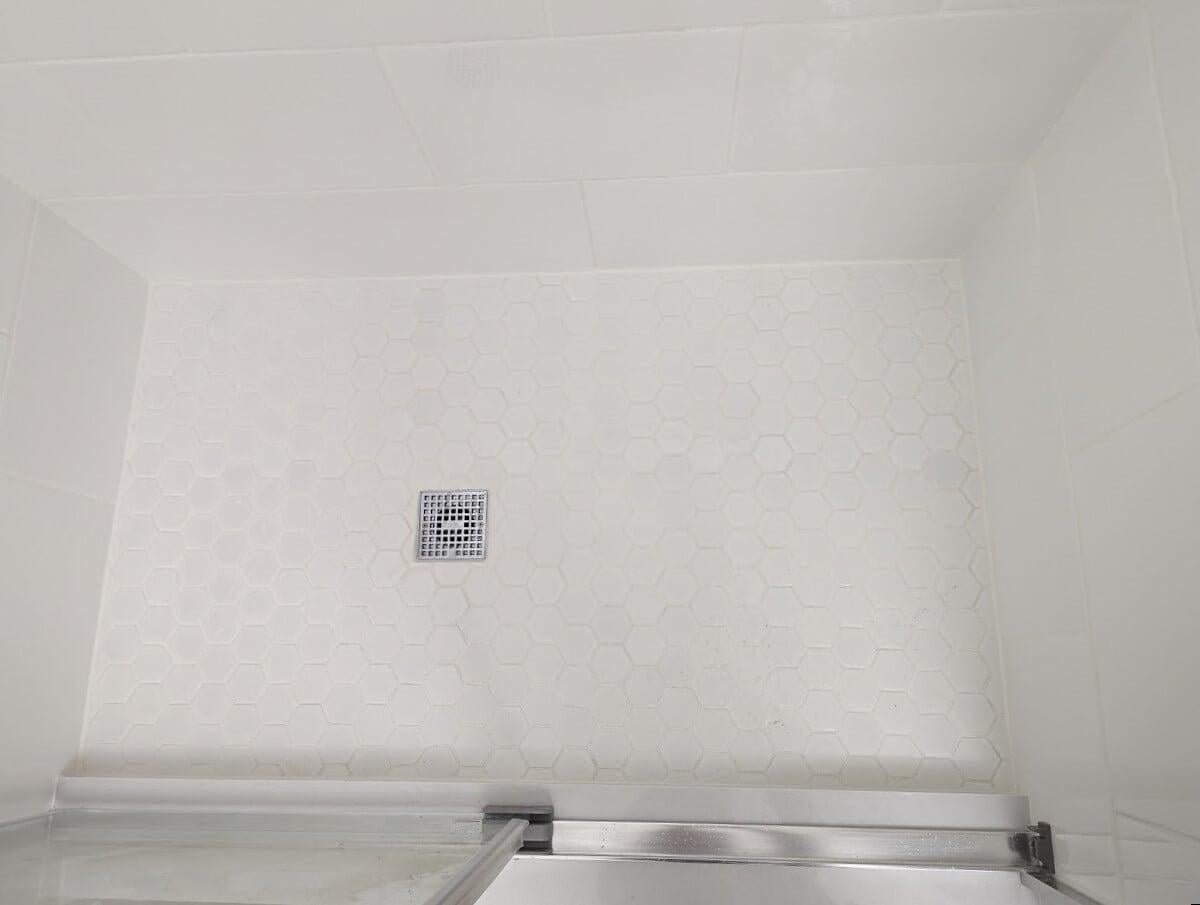
A well chosen shower drain is essential for both functionality and aesthetic appeal in bathroom design. Things like tile size, drain location, and the style and finish of the drain are key factors to think about when picking the perfect shower drain.
- Tile Size Considerations: The size of your tiles plays a critical role in selecting the right shower drain.
- Point Drains: Best for smaller tiles (e.g., mosaic tiles) to ensure water flows toward the drain.
- Linear and Tile-In Drains: Accommodate both large-format tiles and smaller tiles, offering flexibility in design.
- Perimeter Drains: Require careful tile layout due to the need for sloping the entire floor toward the edges.
- Water Flow Capacity: Select a drain that can manage the water flow from your shower efficiently. This is especially crucial for showers with high-flow fixtures like rainfall or multi-jet systems to prevent water from pooling.
- Material and Quality: Choose drains made from robust materials like stainless steel or brass for long-lasting performance. These materials resist corrosion and wear, ensuring the drain stays effective over time.
- Style and Appearance: Pick a drain design that aligns with your bathroom's aesthetic. From minimalist grates to decorative patterns, the drain can be a subtle yet stylish addition to your shower.
- Ease of Installation: Look for a drain compatible with your shower's layout and plumbing. Some drains are straightforward to install, while others may need adjustments to the flooring. Consult a plumber if needed for a smooth installation process.
- Budget: Point drains are the most affordable option, while perimeter and tile-in drains are more expensive due to their advanced design and installation requirements.
Where Should the Drain Be Placed in a Shower?
Where Should the Drain Be Placed in a Shower?
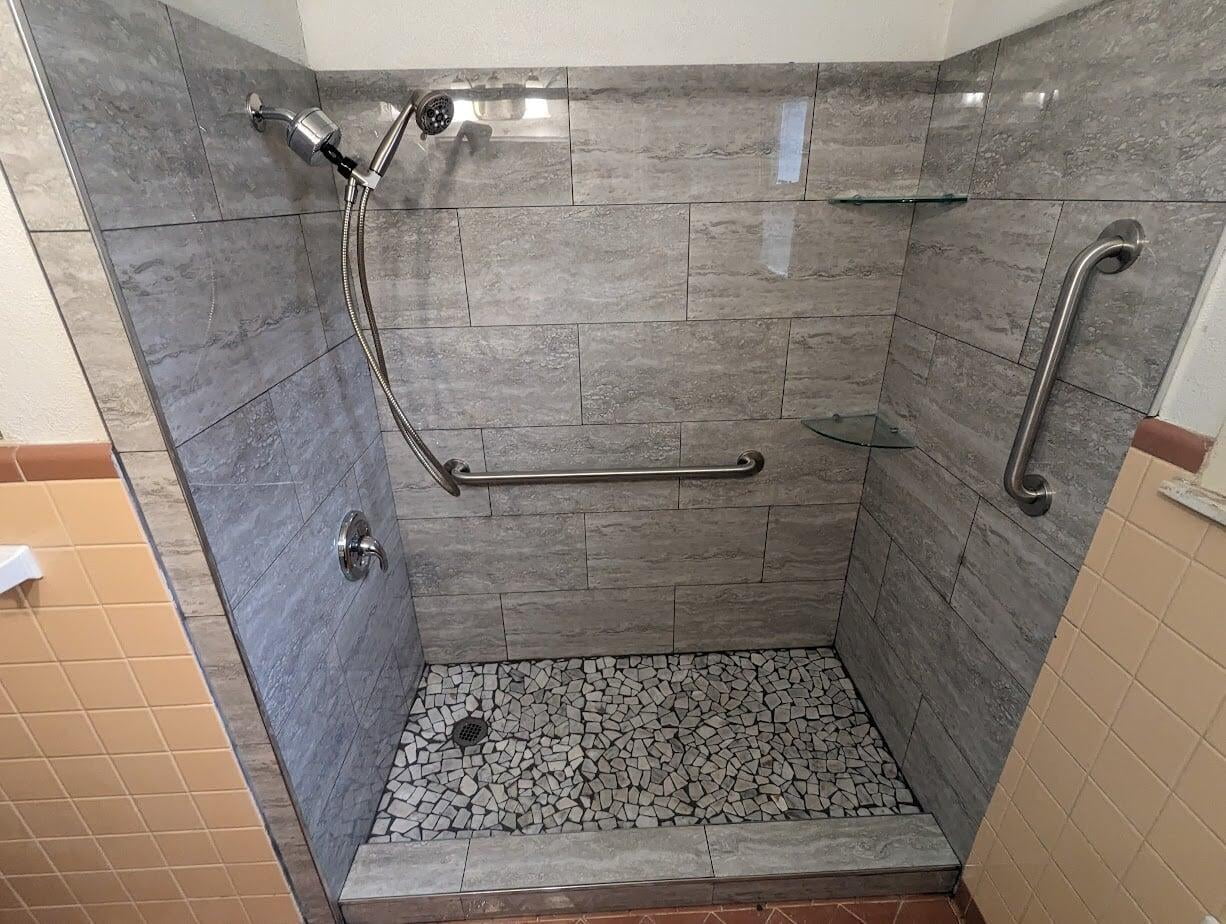
Proper placement of a shower drain is essential for effective drainage, preventing water pooling, and enhancing both functionality and aesthetics. It's important to ensure the floor is appropriately sloped: point drains need a slope from all sides, while linear and perimeter drains require one or multiple directional slopes.
- Shower Design: Point drains are ideal for smaller showers, centrally placed. Linear and perimeter drains suit larger or modern layouts, typically installed along edges. Off-center placement can work for unique designs.
- Shower Size and Layout: Compact showers benefit from central point drains, while larger or curbless designs are better with linear or perimeter drains along the edges.
- Water Source Location: Align drains with the water flow from showerheads or jets to prevent pooling.
- Plumbing Code Compliance: Ensure placement meets local codes for slope and distance from walls.
Pro Tip:Consult a professional plumber to optimize drain placement for functionality and compliance.
Pro Tip:Consult a professional plumber to optimize drain placement for functionality and compliance.
FAQ's
FAQ's
How do I know what kind of shower drain I have?
How do I know what kind of shower drain I have?
To determine the type of shower drain you have, look for either a linear or point shape. Linear drains are typically long and narrow, while point drains are generally square or circular in shape.
Is a center or side shower drain better?
Is a center or side shower drain better?
The choice between a center and side shower drain depends on your design preferences and needs. A center drain is classic, cost-effective, and provides efficient drainage with evenly sloped floors, but it may limit tile options. A side (linear) drain offers a sleek, modern look, works well with larger tiles or curbless showers, and allows for a single-direction slope, but it can be more expensive and require additional maintenance. Consider your budget, layout, and style to decide which fits your shower best.
What kind of drain do I need for a shower pan?
What kind of drain do I need for a shower pan?
For a shower pan, you will need a point drain. This is because point drains are designed specifically for smaller shower spaces and can effectively handle the flow of water from one central location. However, if you have a larger shower space or prefer a more modern aesthetic, a linear drain may also be suitable for your shower pan. Remember to consider factors such as tile size and slope when selecting a drain for your shower pan.
What Are Common Problems with Linear Shower Drains?
What Are Common Problems with Linear Shower Drains?
For a shower pan, you will need a point drain. This is because point drains are designed specifically for smaller shower spaces and can effectively handle the flow of water from one central location. However, if you have a larger shower space or prefer a more modern aesthetic, a linear drain may also be suitable for your shower pan. Remember to consider factors such as tile size and slope when selecting a drain for your shower pan.
Choosing the right shower drain is an important step in creating a bathroom that is both functional and stylish. Whether you prefer the simplicity of a point drain, the modern look of a linear drain, or the unique design of a perimeter drain, understanding their differences will help you make the best choice for your needs.
By considering factors like drain placement, tile size, and water flow, you can ensure your shower works properly and looks great. Proper installation is key to avoiding issues like leaks or pooling, so don’t hesitate to reach out to a professional if you need help.
If you’re in Corpus Christi or South Texas and need assistance with choosing or installing a shower drain, feel free to contact us. Our team is here to help you create a bathroom you’ll love for years to come.

